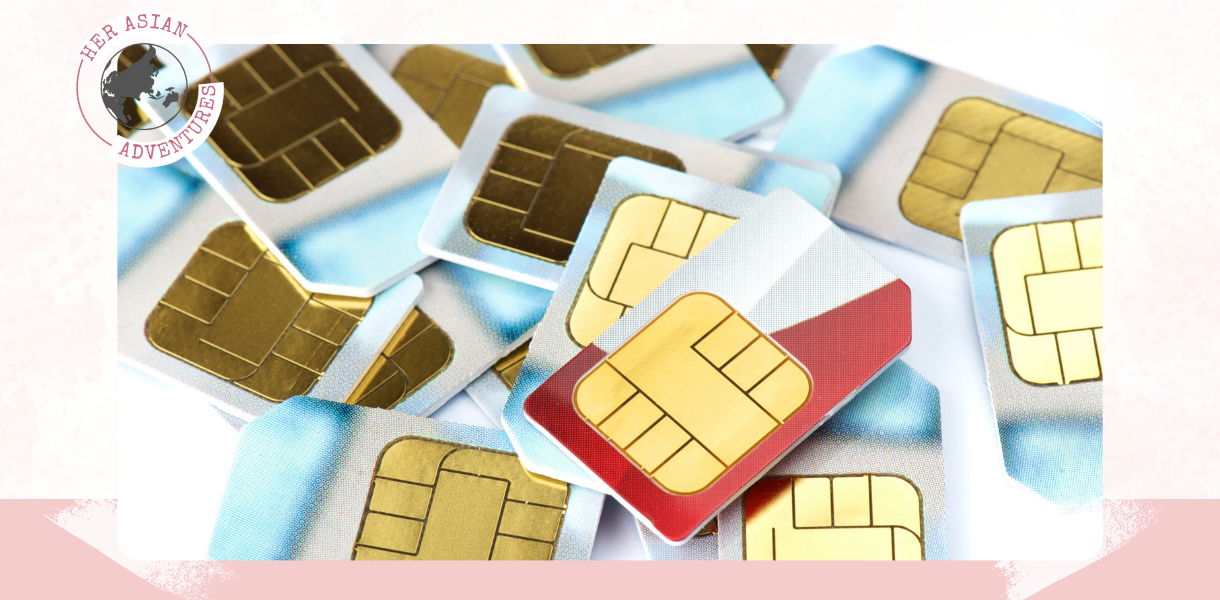Local SIM Card: How to Stay Connected While Traveling
Looking for the best local SIM card for traveling Asia? Here is everything you need to know about staying connected while traveling solo.
Ever found yourself in a foreign country, trying to navigate the bustling streets with nothing but an unreliable Wi-Fi signal?
I’ve been there, and let me tell you, it’s not the most reassuring feeling.
In today’s digital age, staying connected while travelling abroad isn’t a luxury, it’s an absolute necessity, especially for solo female travellers like us.
That’s exactly why buying a local SIM card should be at the top of your travel checklist.
In this travel guide, I’m not only going to share why a SIM card is a travel essential for your next solo adventure, but I’ll also sprinkle in my tried-and-true travel tips for making the most of it.
Are you ready? Let’s dive in!
- Benefits of Having a Local SIM Card When Traveling
- 1. Saves Money
- 2. Stay Connected While Travelling Abroad
- 3. Share Your Location
- 4. Use Social Media
- 5. Overcome Language Barriers
- 6. Move Around Like a Local
- 7. Keep Your Travel Plans Flexible
- 8. Use Ride-Sharing Apps
- 9. Embrace the Local Experience
- 10. Enjoy Exclusive Deals for Travelers
- 11. Better User Experience
- Choosing the Best Local SIM Card for Travelling Asia
- How to Buy a Local SIM Card Abroad
- 1. Choose a Reliable Provider
- 2. Bring Your ID Along
- 3. Select a Plan
- 4. Complete Necessary Paperwork
- 5. Swap Out Your Local SIM Card
- 6. Power Up and Continue Your Adventure
- Extra Travel Tips for Getting a Local SIM Card Abroad
- 1. Buy a Local SIM Card on Arrival
- 2. Consider E-Sims
- 3. Unlock Your Phone (If Necessary)
- 4. Use WhatsApp with the Same Number
- 5. Check your SIM Card Size
- 6. Bring a SIM Card Extractor
- 7. Keep Your Old SIM Card
- 8. Manage Your Data Usage
- 9. Have a Backup
- FAQ – Local SIM Cards
- FAQ 1: How to Stay Connected While Traveling Abroad?
- FAQ 2: What is a SIM Card and How Does a SIM Card Work?
- FAQ 3: Can I Use My Current SIM Card in Another Country? Understanding International Roaming
- FAQ 4: What’s the Difference Between an International SIM Card, Local SIM Card, and Roaming?
- FAQ 5: Why Do I Need a Local SIM Card When Travelling Abroad?
- FAQ 6: Can I Keep My Home Phone Number While Using a Local SIM Card? Will SIM Card Transfer Contacts?
- FAQ 7: Which SIM Card is Best for Southeast Asia?
- Wrapping it up – Buy a Local SIM Card
Table of Contents
Benefits of Having a Local SIM Card When Traveling
Alright, let’s get into the reasons why you should get a local SIM card when travelling abroad. Here are some of the incredible advantages:
1. Saves Money
Wondering how much does a local SIM card cost? Well, in most parts of Asia, they’re surprisingly budget-friendly.
Even if you opt for unlimited data, it’ll likely be less than what you’d spend on a cheap lunch back home.
What’s more, using a local SIM card can help you avoid those jaw-dropping roaming charges that can sneak up on you.
I learned the hard way on my first trip abroad when my phone bill turned into a surprise! Trust me, it’s a mistake I won’t be making again!

2. Stay Connected While Travelling Abroad
Especially for digital nomads and long-term travellers, it’s important to take the time and effort to maintain your friendships both back home and with the people you meet along the way.
Having a local SIM card means you can reach out to friends and family at any time, and hey, maybe even surprise them with a video call!
It will make you feel less lonely while travelling alone and cheer you up when you are feeling down.
And just in case you find yourself in a tricky situation, knowing you can contact local authorities or ask for help is incredibly reassuring.
Extra tip: Even if you opt for a data-only SIM card, you can still use WhatsApp or Skype to make those calls.

3. Share Your Location
Let’s be honest, our loved ones worry, especially when we are young and travelling to a part of the world they’ve never been to.
With a local SIM card, you can easily share your real-time location with your friends and family using apps like Life360.
It’s a brilliant way to let them know you’ve arrived safely and keep them updated on your exact whereabouts.
This small compromise can go a long way, especially when convincing your parents to let you travel alone as a girl.

4. Use Social Media
Social media isn’t just about scrolling through an endless stream of photos or catching up on emails (although that’s pretty awesome too).
It’s your gateway to discovering the best places to visit, top-notch restaurant recommendations, the most Instagrammable spots, and much more.
Plus, it’s your platform to share those extraordinary travel moments with your loved ones, no matter how far you are.

5. Overcome Language Barriers
Let’s face it: not everyone speaks English, especially in those less touristy, off-the-beaten-path spots.
With a local SIM card, you can download translation apps like “Google Translate” that can help you communicate with locals.
Need to know a specific word? Just look it up and have it read aloud.
Want to understand a conversation or a foreign text? Record it or take a picture and have it translated to English.
No more playing charades to get your point across! Ordering mouth watering street food or asking for directions has just become a whole lot easier.

6. Move Around Like a Local
Having a local SIM card can help you feel more confident when exploring a new city.
With Google Maps right at your fingertips, you can easily discover hidden gems, seek out those recommended tucked-away restaurants, and easily find your way back to your hotel, even on your first day.
And for those late-night taxi rides, having a local SIM card means you’re in control.
You can now ensure your driver is taking the best route, guaranteeing you arrive at your destination quickly and safely.

7. Keep Your Travel Plans Flexible
Have you ever stumbled upon a hidden gem and decided to ditch the itinerary? With a local SIM card, you have the freedom to be spontaneous.
You can now look up reviews, discover unexpected attractions, and venture off the beaten path—all without the hassle of hunting down Wi-Fi or squeezing into bustling cafes.
8. Use Ride-Sharing Apps
Summoning a ride is as easy as a tap! Whether it’s Uber, Grab, or your preferred ride-sharing app, having a local SIM card means you can order a ride whenever you need it.
If your feet need a break from exploring, or you find yourself in a potentially unsafe area, just a few taps on your phone and your ride is on its way.
No more worrying about flagging down cabs on unfamiliar streets or trying to negotiate a fair price in a foreign language.

9. Embrace the Local Experience
Having a local phone number makes it easier for locals to contact you. It’s also helpful for setting up services like ride-sharing apps, food delivery, or making reservations.
Plus, in China, I learned firsthand that a local phone number is essential for tasks like opening a bank account, which can be useful if you’re planning to stay there long term or rent an apartment.

10. Enjoy Exclusive Deals for Travelers
Local carriers often offer plans and promotions tailored specifically for travellers.
Think data-heavy packages or even unlimited calling right within the country!
With a local SIM card, you’re in control of how much credit or data you use and you can sometimes even top it up directly from your phone.
11. Better User Experience
With a local SIM card, you can often expect faster internet speeds compared to using a roaming service.
Plus, in some countries or remote areas, international roaming may have limited or no coverage.
Having a local SIM card ensures you have reliable connectivity throughout your solo travels.
This is particularly important if you are like me and rely on the internet for everything from navigating unknown streets to staying in touch with loved ones and even handling work!

Choosing the Best Local SIM Card for Travelling Asia
When it comes to selecting the right SIM card for your SoutheastAsia trip, a little research can make all the difference.
Start by familiarising yourself with the major telecom companies at your destination.
Nearly everywhere you go, you’ll find a handful of reliable carriers ready to keep you connected while travelling abroad
Here are 5 important factors to consider when buying a local SIM card:
1. Coverage Maps
Picture yourself trekking through remote jungles or exploring hidden beaches – the last thing you want is to lose connection with the world.
So, make sure to prioritise providers with extensive coverage in the specific areas you plan to visit. Don’t hesitate to ask locals or fellow travellers for their personal experiences.

2. Validity Period
Pay attention to the expiration date of the SIM card. Some last just a few days, while others can keep you connected for an entire month or more
Opt for the one that perfectly matches the length of your stay, sparing you the hassle of having to constantly top-up your card.

3. Data Plans
Each provider offers a range of data plans, ensuring there’s something for every type of traveller.
So, take a moment to explore the different options and consider your specific needs.
If you’re the kind who relies heavily on data for navigation, social media updates, or even work on the go, then a generous data plan is your travel essential.
On the other hand, if your data demands are more modest, a basic plan might be the perfect fit. The choice is entirely yours!
For those of us who value long conversations with locals or often find ourselves arranging local meet-ups, ensure your plan covers both calls and texts.

4. Customer Service
A reliable customer service team can be invaluable if you run into any issues during your travels.
So, when you’re picking a provider, make sure to go for one known for their top-notch customer support.
Also, try to choose a company with plenty of stores in the cities you’ll be exploring.
That way, if anything comes up, you’ll easily find a nearby spot to address it directly.

5. Price
While the cost of a SIM card can vary by country and provider, they’re usually budget-friendly in Asia.
Not to mention, they often offer much lower call, text, and data rates compared to your home country’s provider.
Now, when it comes to choosing a plan, you’ve got two options:
- Prepaid Plans: These let you pay upfront for a specific amount of data and services. Not only does this give you control over your spending, but it also allows for easy top-ups as you go.
- Postpaid Plans: Opt for this if you prefer receiving a bill at the end of the month based on your actual usage. Perfect for those planning longer stays.
Finally, keep an eye out for special deals and discounts offered by carriers – they might just sweeten the deal and lower the price even further!
Trust me, a little research on this front can go a long way in saving you some extra travel cash.
Continue reading: Expert Tips for using cash and credit cards when travelling Asia.
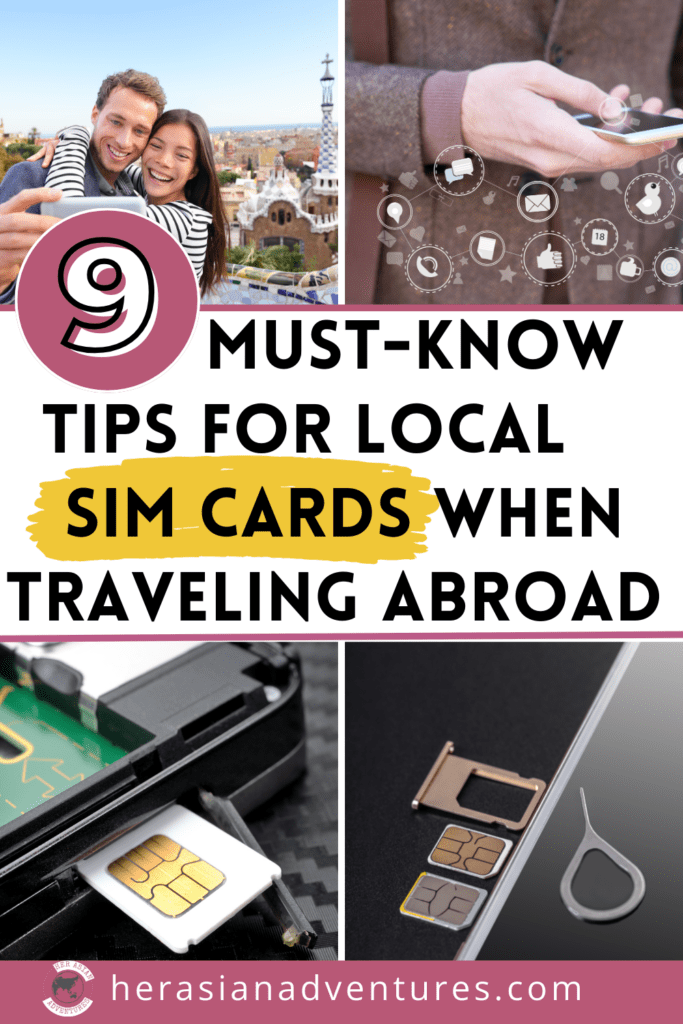

How to Buy a Local SIM Card Abroad
Alright, let’s break it down step by step. Getting and setting up a SIM card in Asia is much easier than you might think!
Follow this guide, and you’ll be connected in no time:
1. Choose a Reliable Provider
Start by heading to a trusted local provider’s store. You’ll find them in airports, local shops, and even online platforms.
2. Bring Your ID Along
Depending on the country, you might need to show some identification to buy a local SIM card.
For example, in Thailand, you need to show your passport so keep it within arm’s reach.
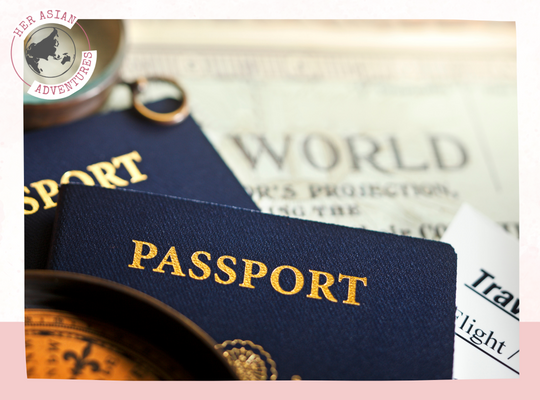
3. Select a Plan
Now, it’s time to have a chat with the provider. Share your specific needs, and they’ll be able to suggest the perfect plan for your stay.
Some providers even go the extra mile and set it up for you!
4. Complete Necessary Paperwork
Seal the deal by finishing up any required paperwork or registration processes as guided by the provider.

5. Swap Out Your Local SIM Card
Once registered, it’s a straightforward switch – replace your current SIM card with the new one. Here’s how:
- Step 1: Power Off – Turn off your phone before attempting to insert the new SIM card. It’s a small step that can save you a headache down the line.
- Step 2: Locate the SIM Slot – Most phones have a special spot just for SIM cards. It’s usually a tiny tray that pops out with a SIM card ejector tool or even a paperclip.
- Step 3: Gently Insert – Slide the SIM card into the tray, ensuring it snugly finds its place. If done right, you’ll get that satisfying ‘click’.
6. Power Up and Continue Your Adventure
It’s the moment of truth. Turn your phone back on, and Ta-da! You’re now connected to the local network, all set to embark on the next chapter of your trip.

Extra Travel Tips for Getting a Local SIM Card Abroad
Now, let me share some personal travel tips to make handling SIM cards while travelling overseas a breeze:
1. Buy a Local SIM Card on Arrival
As a solo female traveller, staying connected while travelling abroad is non-negotiable for me.
I always make it a top priority to grab a local SIM card as soon as I touch down in a new country.
Yes, I know it might cost a bit more at the airport, but the peace of mind it brings is worth every penny.
When I´m travelling solo, there are only a handful of things I’m willing to splurge on, and safeguarding my well-being is right at the top of that list.
So, regardless of the cost, a local SIM card is a travel essential I happily invest in every single time.

2. Consider E-Sims
These virtual SIM cards, offered by companies like Airalo, are activated without the need for a physical card.They’ve proven to be incredibly handy for many travellers thanks to their reliable service and flexible plans.
Plus in Southeast Asia, they offer a regional eSim. It covers most countries and you can top it up if you run out directly from the app.
Now, for full disclosure, I must admit that I personally haven’t given them a shot. Why, you ask? Well, they do tend to be a bit more expensive than regular SIM cards.
Besides, for me, getting a local SIM card at the airport is super easy and takes less than 10 minutes.
So, it’s all about finding the right balance between convenience and cost.

Read More: 25 Travel Apps You Can´t Travel Southeast Asia Without.
3. Unlock Your Phone (If Necessary)
Before you can use a local SIM card, make sure your phone is unlocked.
This small but crucial step allows you to effortlessly switch out SIM cards, giving you the freedom to choose the best local provider for your specific needs.
It’s a step that’s sometimes overlooked but can truly make or break your trip.
However, if, for any reason, your phone isn’t unlocked, don’t panic. Just reach out to your current mobile service provider and ask them for help.
Or just bring along a different phone for your trip.

4. Use WhatsApp with the Same Number
One of the perks of having a local SIM card is being able to use messaging apps like WhatsApp to stay connected with friends and family, no matter where you are.
Whatstapp even allows you to keep your existing phone number, along with all your personal contacts and ongoing conversations.
Just be extra careful when opening WhatsApp for the first time after changing your SIM card to ensure you choose the right option for maintaining your existing number.

5. Check your SIM Card Size
Check your phone’s specifications to know if it uses a nano-SIM, micro-SIM, or standard-sized SIM card. This ensures it’s actually compatible.
Most modern smartphones use nano-SIMs, but older models may require a different size.
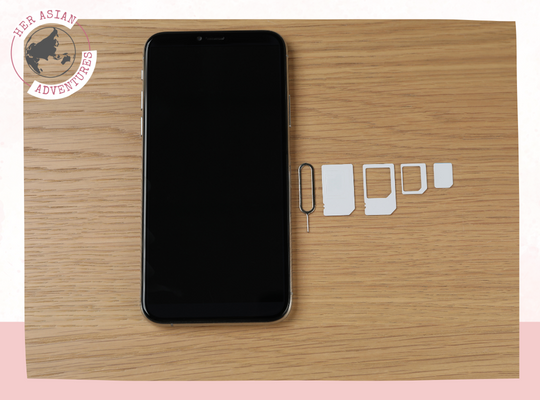
6. Bring a SIM Card Extractor
I always recommend bringing your own SIM card extractor tool.
This might come in useful for swapping out your local SIM card for your home country’s card temporarily, especially for work-related matters or managing your bank account.
If you don’t have one on hand, a trusty paperclip or earring can do the trick too!
7. Keep Your Old SIM Card
If you plan on using it again, make sure to keep your original SIM card safe. A simple SIM card holder or a ziplock bag can be enough.
Personally, I recently got a SIM extractor that came with its own mini compartment – talk about handy!

8. Manage Your Data Usage
Most carriers offer the option to set limits on your data usage. This way, you’ll receive timely alerts as you approach your limit, helping you avoid any unexpected charges.
And hey, try to use Wi-Fi as much as possible! Cafes, hotels, and public spaces often provide free Wi-Fi for guests.
But do remember to use a VPN to keep your online information safe and sound.
Continue reading: 40 Travel Safety Items for Solo Female Travelers in 2023

9. Have a Backup
Before switching to a local SIM card, play it safe and back up any crucial information from your old SIM card.
Trust me, this small step can save you a world of hassle down the line. After all, it’s always better to be safe than sorry!
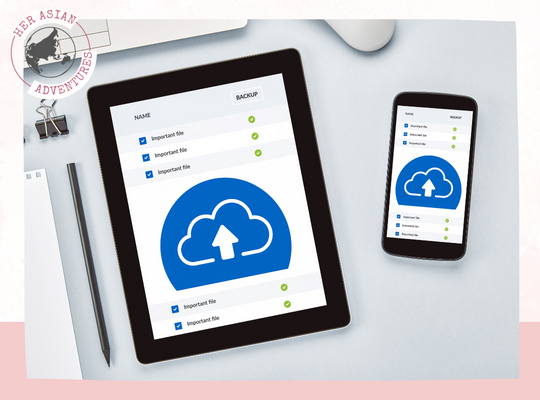
FAQ – Local SIM Cards
FAQ 1: How to Stay Connected While Traveling Abroad?
There are many different ways to stay connected while traveling overseas.
If you are a family with kids or have many electronic devices, consider grabbing a Wi-Fi hotspot. If you are on a strict budget, free Wi-fi might be enough.
However, in my opinion, getting a local SIM card at your destination is the best option.
FAQ 2: What is a SIM Card and How Does a SIM Card Work?
A SIM card, or Subscriber Identity Module, is a small chip that stores information about your phone number, contacts, and other data.
It allows you to connect to a local network, make calls, send messages, and use the internet.
FAQ 3: Can I Use My Current SIM Card in Another Country? Understanding International Roaming
Yes, you can usually use your current SIM card in another country through a service called international roaming.
Just remember to check with your carrier to ensure your phone is unlocked, and get the details on specific roaming plans and rates
However, international roaming can be super expensive. To avoid these extra charges, it’s recommended to buy a local SIM card upon arrival.
FAQ 4: What’s the Difference Between an International SIM Card, Local SIM Card, and Roaming?
International SIM Card: Offers coverage in multiple countries with a single card. Best for travelling Europe or e-sims like Airlo.
Local SIM Card: Provides a local phone number and data plan in the country you’re visiting. Best for backpacking Southeast Asia.
Roaming: Using your current SIM card in another country but at much higher rates.
FAQ 5: Why Do I Need a Local SIM Card When Travelling Abroad?
A local SIM card allows you to enjoy local rates for calls, messages, and data, which are usually much more affordable than international roaming charges.
Plus, it also helps you stay safe and connected while travelling overseas, particularly important for solo female travelers.
FAQ 6: Can I Keep My Home Phone Number While Using a Local SIM Card? Will SIM Card Transfer Contacts?
No, using a local SIM card means you’ll have a new local phone number.
However, you can keep your original number active by keeping your home SIM card safe.
Additionally, SIM cards do not store contacts by default. You’ll need to transfer your contacts to your phone’s internal storage, cloud service, or use a SIM card manager app to copy them.
FAQ 7: Which SIM Card is Best for Southeast Asia?
The best SIM card for Southeast Asia depends on several factors. Do your research before your trip and consider your specific needs.
This great article includes some of the best providers in Southeast Asia.

Wrapping it up – Buy a Local SIM Card
These are just some of the amazing advantages of having a local SIM card when travelling abroad.
With these essential travel tips in mind, you’re now well-prepared to obtain and make the most of your local SIM card.
So, the next time you set off on a solo adventure, make sure a local SIM card is right at the top of your packing list. Trust me, you’ll thank yourself later!
Have any questions or additional tips to share? I’d love to hear from you!
Drop a comment below and let’s keep the conversation going.
Happy travels!

P.S. If you found this guide helpful, give it a thumbs up and save it on Pinterest for easy access in the future.



